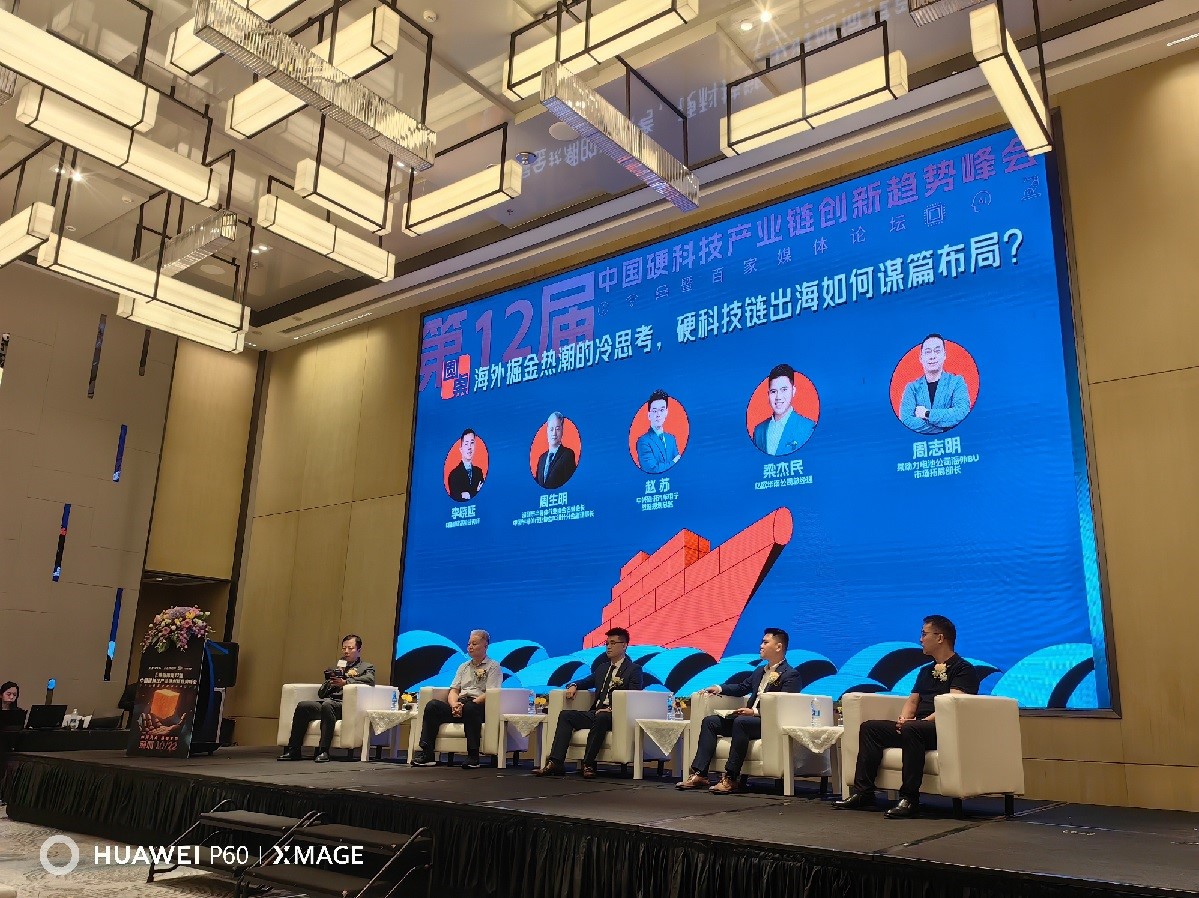At the 12th China Hard Technology Industry Chain Innovation Trend Summit hosted by EEVIA in Shenzhen, Guangdong, industry experts and business representatives discussed the preparations, strategic choices and challenges of hard technology enterprises going global in a roundtable meeting. With the theme of "Calmly Examining the Overseas Nugget Boom: How to Effectively Lay Out the Hard Technology Industry Chain", an in-depth discussion was held on the formulation of overseas strategies, the understanding of market demand, and the balance of risks and opportunities. China Exportsemi has compiled the main views for you as follows:
Ⅰ. Strategies and preparations for going global
1. Market status: going global be a drivers of growth
According to the analysis of Li Xiaoyan, a senior consultant at the E-Wei think tank, in recent years, more and more Chinese hard technology companies have regarded going overseas as a strategic priority. According to the data, 53% of A-share listed companies disclosed overseas income, a significant increase from last year. In particular, enterprises with international income generally achieved 10% revenue growth, while the growth of enterprises without going overseas showed negative growth. This shows that going overseas has become an important engine to promote the growth of enterprises.
2. Ways of go global: steady layout vs. partners
How can businesses enter new markets? Will you build a factory directly, or will you enter through a partner? Zhou Shengming, honorary president of Shenzhen Semiconductor Industry Association, pointed out that the current international situation is changeable, and hard technology enterprises going overseas is not only a strategic choice, but also an important means to alleviate the pressure of domestic competition. Different from the previous overseas process, modern hard technology enterprises need to have core technologies and intellectual property rights in order to gain a foothold in global competition.
3. Product adaptability and competitiveness
ZTE's Zhao Su emphasized that products must have market adaptability and avoid blindly participating in overseas domestic competition. He suggested that enterprises should first consolidate their market position in China and form a scale effect before promoting overseas expansion. At the same time, the concept of "cooling-off period" should be introduced when making overseas decisions to calmly and comprehensively assess risks and benefits.

Figure: At the roundtable forum, experts shared their views on hard technology chains going overseas
2. Deal with industry and cultural differences
1. Explore the different difficulties of ToC and ToB
Liang Jiemin, general manager of Equal Osean China Company, pointed out that most of the current Chinese brands that have successfully gone overseas are concentrated in the ToC field, and ToB companies are still facing great challenges. In the past, it has been discussed that the idea of "relocating the whole industry chain overseas" is risky, and such a layout may face monopoly and dumping problems. He believes that companies do not have to introduce the entire industrial chain into the target market, but focus on core value creation to avoid risks and respect the local industrial ecology.
2. Product and supply chain layout
Zhao Su pointed out that enterprises in the asset-heavy field go overseas, especially in the automotive industry, which requires complete supply chain migration capabilities, which is different from the asset-light model of consumer goods. As the export-oriented shift of auto companies to localized demand, relevant suppliers also need to keep up with the pace in order to achieve an effective overseas layout.
3. Practical case: the globalization path of power battery enterprises
Zhou Zhiming, director of overseas market development of power battery company, shared the company's experience of setting up factories in the United States, Europe and Vietnam, emphasizing that the core of going overseas is to meet customer needs and enhance product competitiveness. For example, through the innovative solution of pouch batteries, the company has successfully opened up the U.S. market and provided customers with batteries with higher energy density, winning the trust of international customers.
3. Rational choices in the face of opportunities and challenges
1. Seize the opportunity or plan calmly?
In today's complex global market environment, how to balance speed and planning has become a problem for enterprises to consider. Zhao Su said that although the opportunity is fleeting, it is necessary to carefully consider the investment of resources when making decisions, especially when it comes to high capital and long-term strategy. At the same time, although policy incentives from various governments are frequent, enterprises need to deeply understand and comply with local laws and regulations.
2. Adapt to the culture and regulations of the local market
Representatives from various industries unanimously emphasized that entering overseas markets requires not only strong product strength, but also compliance and adaptability. For example, the experience of investing in Indonesia shows that the country has a high registered capital requirement for the manufacturing industry. Not only do companies need to be financially prepared in advance, but they also need to understand cultural differences and policy requirements.
Summary
All in all, the road to overseas for hard technology companies is full of challenges, but with the right strategic guidance and adequate market preparation, the road to overseas is also full of potential. In the process of moving towards internationalization, enterprises should pay attention to the adaptability of products, establish a solid foundation in the domestic market, and at the same time respond to changes in the international market with a calm and prudent attitude. With the further cultivation of China's hard technology enterprises in overseas markets, brands with core competitiveness are expected to stand out in the wave of globalization and inject new impetus into the high-quality growth of China's economy. China Exportsemi will continue to pay attention to the overseas expansion of China's semiconductor industry and provide you with cutting-edge reports.






